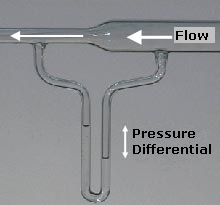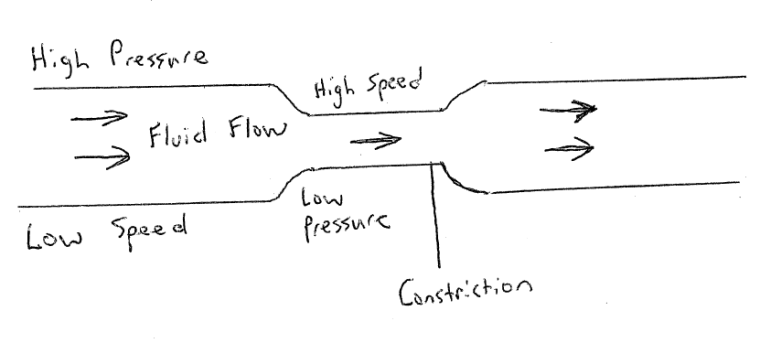Giovanni Battista Venturi was born in 1746 to an affluent family in Reggio, Italy. An aspiring student, Giovanni was ordained as a priest and a professor by the age of 23. An avid historian of science at the University of Modena, he was the first to emphasize Leonardo da Vinci as a scientist rather than just an artist as he’s more commonly known. Despite his love for history, it wasn’t long before the University of Modena became aware of his talents in mathematics where they appointed him as professor of geometry and philosophy in 1774. During his tenure at the University of Modena, Giovanni was promoted to the Professor of Experimental Physics, served as the Duke of Modena as the State engineer and auditor, later serving diplomatic roles in both France and Switzerland.
Giovanni is most well-known for his work in developing what is now known as the venturi effect. In 1797, he published a study on the flow of water through short cylindrical tubes. It wasn’t until 1888 that Venturi’s design was applied to something practical when a man named Clemens Herschel received a patent for the first commercial venturi tube. The original purpose of the venturi tube was to measure the amount of water used in individual water mills and is still used to this day as a means of measuring fluid flows.

The venturi effect is a principle in fluid dynamics and states that a fluid’s velocity must increase as it passes through a constricted pipe. As this occurs, the velocity increases while the static pressure decreases. The pressure drop that accompanies the increase in velocity is fundamental to the laws of physics. This is known as Bernoulli’s principle. Below is an illustration of how the venturi effect works inside of a constricted tube.

In everyday life, the venturi principle can be found inside of many small engines such as lawn mowers, gas powered scooters, motorcycles and older style automobiles. Inside the carburetor, there is a small tube through which filtered air flows from the intake. Inside of this tube is a short narrowing. When the air is forced to constrict, its velocity increases and creates a vacuum. This vacuum draws in fuel and mixes with the air stream causing it to atomize. As the throttle valve is opened further, more fuel is forced into the engine. This increases the RPM and creates more power.

This principle is also applied to EXAIR’s line of E-Vac products to create vacuum. The .gif below illustrates how an In-Line E-vac works. (1) Compressed air flows through the inlet (2) and is directed through a nozzle, constricting the flow of air. (3) As the air stream exhausts, it expands causing a decrease in pressure and an increase in velocity prior to passing through the venturi. (4) A vacuum inlet tangential to the primary airflow is located at the suction point between the orifice and the venturi. (5) The airflow that is drawn through the vacuum inlet mixes with the primary airstream, then exhausts on the opposite end.
The venturi effect is used in a variety of other EXAIR products used for cooling, drying and cleaning, in addition to the vacuum generators. If you have a process in your facility that may benefit from an Intelligent Compressed Air solution, give us a call. We’d be happy to discuss your application and implement a solution to both reduce your compressed air costs and improve worker safety.
Tyler Daniel
Application Engineer
E-mail: TylerDaniel@exair.com
Twitter: @EXAIR_TD
Photo: Venturi Tube with labels by ComputerGeezer and Geof. GNU Free Documentation License